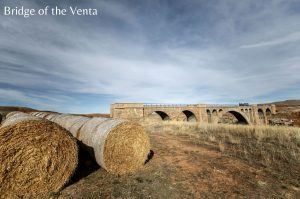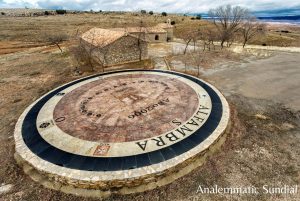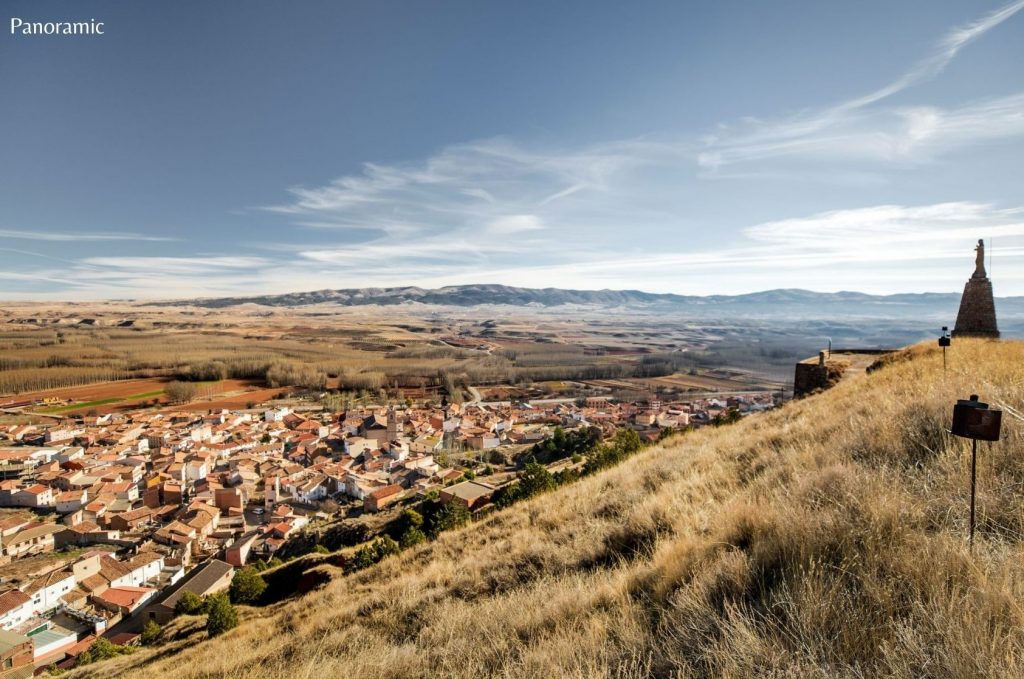Alfambra

NOT TO BE MISSED
Murea, the Sagrado Corazón de Jesús, the Bridge of the Venta, the Reloj Analématico, the Hermitage of Santa Ana and the Route of Los Alcamines.




Complement your visit with:
At your way:
Large scale – go to page
The path of the cold – go to page
Black and White – go to page
The noise of the silence – go to page
Entrench:
Alfambra, Trenches- go to page
Celadas, Santa Bárbara Front – go to page
Argente, Serretilla Trenches – Mascarón – go to page
El Pobo, Fortifications- go to page
El Pobo, Hoyalta Refuges – go to page
Andatela:
Route of the Virgen del Campo – go to page
Hiking trail through Sierra Palomera – go to page
Hiking trail along the Barranco de la Hoz – go to page
Hiking trail Alto de la Serretilla y Barranco del Mascarón – go to page
Services:



Inhabitants: 483
Altitude: 1.046 m
Demonym: Alfambrino/a.
Website: www.alfambra.es

How to get there?
Alfambra is 38 kilometres from Teruel on the N-234, taking the local road at Santa Eulalia. See Map
NATURAL HERITAGE

The Vega of the river Alfambra.
Fuente Gragera.
Cubillos, Cañamaría, Santanillas and Tolmo.
Altabás ravine.
HIKING TRAILS AND ROUTES:
Route of Castelfrío (PR TE 35 Route of the Sierra de Castelfrío).
Route of Los Alcamines (PR TE 36 Route of the Alcamines). Alfambra- Villalba Alta- Ermita de la Virgen del Águila- Mas de Cirujeda-Alcamides-Galve.
Vía Verde of Alfambra, which can also be done on horseback or by bicycle.
Cicloturista de montaña.28 kilometres in which most of the route runs along the railway track.
Corbalán-Teruel.
Ruta BTT (Valley of the Alfambra-Castelfrio)
HISTORICAL AND CULTURAL HERITAGE




Parish Church of Nuestra Señora de la Asunción. (Classicist façade influenced by nannierism)
The castle and the cistern, 12th and 13th centuries. Only the remains of the tower and the cistern with its arched vault are preserved. The strategic value of the castle hill has led to its repeated occupation throughout the ages. In 1956, a monument to the Sacred Heart was erected on the south side. At the foot of the castle, on a promontory above the village, the remains of the medieval church can be seen.
Monument to the Sacred Heart of Jesus .(1956)
The hermitage of Santa Ana is the result of two construction periods, with a nave covered with a wooden roof over perpendicular arches and a chancel decorated with simple eighteenth-century paintings. The mural ensemble found during the refurbishment of the chapel stands out. The mural paintings, which date from the second half of the 15th century, were painted using the fresco technique, by means of which they were drawn on fresh plaster (which is why there are black strokes outlining the figures) and then coloured.
The pictorial decoration shows various scenes, including an image of the Catholic Monarchs which, according to all the indications, is one of the first portraits of the monarchs as a couple.
Chapel of San Juan Bautista.(18th century)
Statue of the farmer.
Civil architecture. Palace of Doña Ricarda Gonzalo de Liria y Blesa
Modernis fountain of Sta Beatriz (1926)
The analemmatic sundial of Alfambra is the only one in Aragon and one of the largest in Spain. It is a clock built on the ground in which the gnomon is the observer himself, who must place himself in the central figure on the corresponding month and day. The shadow projected by the body will tell you the approximate time.
Beet museum. (Modernist construction) Museum in which farm tools are collected, from the beet harvesting period, audiovisual that recreates the cultivation of beet .
The railway works.
The huts: These are caves built during the war that were used as refuge for the inhabitants of the village. They communicate with each other by means of galleries.
FESTIVALS AND TRADITIONS
In January, the traditional bonfires of San Antón are lit between the 16th and 20th.
During Easter Week, the medieval recreation of the Subida a la Encomienda takes place. This event commemorates the time when the villagers used to pay taxes to the commander of the castle.
In May, the San Isidro Agricultural and Livestock Fair is held. With the revival of old agricultural competitions, such as the tractor and trailer manoeuvring competition or the ploughing competition.
On the Saturday around the 13th of June, the locals go on a pilgrimage to the hermitage of Santa Ana.
On 3 and 4 and 5 July, the festivities are held in honour of Saint Beatriz and her martyred brothers Simplicio and Faustino.
From 15th to 17th August, the Assumption and San Roque.


